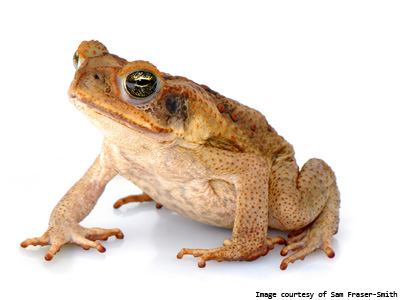Top tips for writing a press release
Top tips for writing a press release
Posted by s.hettrick on 2 April 2014 - 12:00pm
 By Simon Hettrick and Alexander Hay.
By Simon Hettrick and Alexander Hay.
Whether you're researching a cure for cancer or the eating habits of the common toad, every now and then you'll want to tell the outside world about your research. It's time for a press release! Here are our five top tips on preparing one.
1. Do you need professional help?
Press releases need to be written in a journalistic style that will appeal to publishers. Most organisations will have press officers whose job it is to write press releases for researchers. This is typically a free service, because it's in your employer's interest to showcase your successes. To find a press officer, ask the faculty member responsible for marketing or contact the marketing department of your university or employer.
Once you've been assigned a press officer, he or she will meet with you and discuss your story. Generally, a draft will be written and you'll get a chance to review it before it is published (nonetheless, always make sure that you tell the press officer that you want to review the release).
This isn't to say that you can't have a shot at writing the press release yourself, but keep in mind that it requires a specific style of writing (see below).
2. What's the story?
Every story needs a hook: something that grabs the reader's attention. Although a press officer will help you decide on a hook, it's good idea to have a think about it yourself. For one thing, it's a handy indicator of the newsworthiness of your release. If you can't think of something exciting, it's unlikely that someone else will.
Deciding on a hook requires a bit of amateur psychology. Think of your potential readers: what do they love, what do they hate, what are their motivations and what are their prejudices? Why should they see the subject of your press release as important to them and the wider world? If you don't know why the reader should read it, they won't either.
The answer will depend a great deal on who your press release is aimed at. If you can link to a strong emotion or a compelling subject, you are likely to generate interest. (Famously, sex and death are the big hooks for most people, and it's amazing how these somewhat racy subjects can be linked to pretty much anything. Even toads.)
Remember that the things that excite academics can be different to the things that excite journalists. The best example being funding. Getting funded is big news for an academic, but journalists are generally uninterested in funding until it's been used to do something, and why should the public care at all? You have to find out the best way to make them care, and this means finding a subject you can focus on throughout the press release - don't get sidetracked.
3. Where to publish?
Think about where you want to publish. This will dictate the hook you choose, the style of writing and the level of technical detail that you should include.
Everyone wants to get something into Nature, New Scientist or one of the national papers. They have a huge readership, but this means there's fierce competition for space. You'll be competing with everything from world events to celebrity stories. Sometimes it's better to aim for a more specialist market, such as magazines and website that service your research area. They may have a smaller distribution, but they're much more likely to publish your work, and their audience is much more likely to be interested in it.
You now have to decide how to contact publishers. This is a job that's best left to press officers, because they will have the necessary contacts, and will most probably have accounts with distribution networks, such as Eurekalert and AlphaGallileo. Distribution networks give you access to thousands of publishers from the big national papers to specialised blogs. You can of course use your own press contacts if you have them, and this is when the truth in the adage "it's not what you know..." really comes to light. You can also try contacting publishers blind, but the chances of success are pretty low.
Of course, the difficulty of distribution depends entirely on the strength of your story. If you've just cured cancer, you can sit back and wait for the papers to come to you (and they'd pay too). If you've just completed a study into the eating habits of the common toad, you'll have to do the work.
4. Grit your teeth when it comes to detail
A press release is about gaining exposure for your research. Exposure is kudos for you, and increases the likelihood of persuading funders that your work is important. A press release is not about communicating the minutiae of your work. You may have spent the last three years waist deep in stagnant water watching what toads eat, but it's unlikely you'll get to say much about the experience (unless there's an anecdote: journalists love genuinely funny anecdotes).
It's easy to get frustrated when a press officer or journalist wants to focus on the headline grabbing element of the work, and not the work itself. They are also liable to skim over details that they see as unexciting. Remember, though, that they are not researchers but communicators and so their aims and goals will be different to yours, as will their way of viewing the world. Besides, the exposure you gain from a press release could be instrumental in bringing in new collaborators, increasing your standing in your organisation and bringing in more funding (you might even be able to get a research student to do all that standing around in stagnant water). If you can bear to overlook detail, you'll end up with a story that will be published and hopefully the exposure will make the whole experience worthwhile.
5. Learn to write... again
Writing for scientific papers is a million miles away from journalistic writing. Academic writing takes a number of facts, strings these together with theory and slowly builds to a conclusion. Journalism and press releases aim to get a message through to as many people as possible.
For this, you need to write in a way that is easy to read and gets to the point immediately. Structure your press release like a pyramid, with the most important point first and the detail and other supporting facts later. The first paragraph is key and should summarise the story with just enough detail to make the reader want to read more. It should also give time, place and context. The old journalist's maxim of "Who, What, Why, Where, When" is what you need to remember when writing your first paragraph, since you can always give more information later in the press release.
Here's a good example of a first paragraph, as featured in a recent BBC News story:
Skeletons unearthed in London Crossrail excavations are Black Death victims from the great pandemic of the 14th Century, forensic tests indicate.
This example tells you the bare minimum about the story but also enough for you to know if you want to read on. It also gives you a place (London) and a time (the remains are almost 700 years old and the results have just been announced).
It should also lead onto the next paragraph, which details the story further:
Their teeth contain DNA from the plague bacterium Yersinia pestis and their graves have been dated to 1348-50.
Further paragraphs either continue to add detail or feature quotes:
Crossrail's lead archaeologist Jay Carver says the find "solves a 660-year-old mystery".
"This discovery is a hugely important step forward in documenting and understanding Europe's most devastating pandemic," he said.
Introduce the speaker (even if it is you) and explain why their views are important first, and summarise what they are saying before you quote them in depth. At the end of the article, finish with a paragraph that encourages the reader to find out more or a quote or fact that concludes the story in a fitting way, or mentions a relevant tie-in:
The latest announcement comes ahead of a Channel 4 documentary, Return of the Black Death: Secret History, on 6 April, which follows the Charterhouse Square discovery.
The reader should be able to use the press release as a basis for their own news story, if they are a journalist, or be reasonably informed after reading it, so the content and facts must be readily accessible. Only use jargon when necessary, explain it thoroughly when it first appears and also avoid slang and clichés. Otherwise, use clear, everyday language, without dumbing down, and make as many of your sentences active, not passive, as you can. For the most part, active sentences flow better and are less likely to confuse the reader.
There are many good online resources that describe how to write a press release, such as this one at SciDev and this one from the European Space Agency (you can even pick up some writing tips from our style guide). And for the real hardcore press-release writers, I recommend reading the Economist Style Guide (which is also available online). It may sound about as exciting as the eating habits of the common toad, but it's an incredibly interesting and useful book.
Finally, make sure you include links or references to your work in the press release, as well as contact details and a date. If there is an embargo, make it clear at the very start.
6. Read the newspapers and practice a lot
The best way to learn how to write a good press release is to read how the pros do it. Read a newspaper every day! Find good examples of press releases and see what you can learn from them. Finally, practice whenever you can - it takes time, but will soon become second nature.

